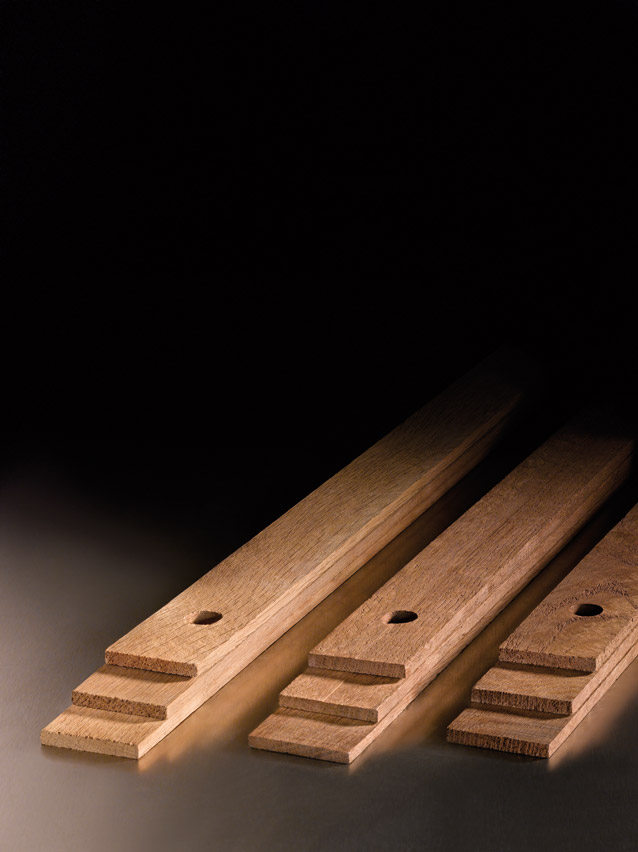Total control of oak profile
thanks to the Oakscan® selection
-
Properties
- Oakscan® selection: high tannin content.
- Intense contribution of aromas, roasted, dark chocolate, slightly smoked and mineral notes on white wines.
- Structure on the palate but without excess thanks to a higher thermic treatment, volume and sweetness, persistency.
OBJECTIVE: Typical, intense oak profile, and excellent blending tool.
-
Technical characteristics
French oak
+/- 200 g (0.44 lbs)
0.105 m2 (1.12 sq ft)
Specific
Carton box of 100 staves, pallet of 25 boxes -
Guidelines for use
OPTIMAL PERIOD FOR STARTING CONTACT
– White wines:
From the start of primary fermentation for a well-integrated oak profile and respect of the fruit.
– Red wines:
Before malolactic fermentation for a more complex aromatic profile and optimal integration of the tannic structure, or at the beginning of aging.
RECOMMENDED AGING TEMPERATURE
15°C (60°F) minimum with strict monitoring of microbiological conditions.
SET UP
It is recommended that the staves be attached halfway up the tank, using food-grade binding straps, or to stack them on stainless steel rods.
RECOMMENDED TIME OF CONTACT
Minimum 4 months, to be monitored by tasting.
-
Recommended dose rates
-
Practical examples of use
On fresh white grape varieties with a varietal profile such as Sauvignon Blanc, aiming for a very discreet oak profile, respect of the fruit, complexity and minerality: 1 stave/hl (0.04 sq ft/gal), 80% Extrême Délicat, 20% Extrême Intense at the start of primary fermentation.
On mature and exotic white grape varietals such as Sauvignon Blanc, Sauvignon Gris, Verdejo, for a generous and complex oak profile, with volume and persistency on the palate: 1.5 stave/hl (0.06 sq ft/gal), 2/3 Extrême Délicat, 1/3 Extrême Complexe at the start of primary fermentation.
On Merlot with a fresh fruit profile, soft and fruity, aiming for additional sweetness and complexity: 2 staves/hl (0.08 sq ft/gal), 2/3 Extrême Délicat, 1/3 Extrême Complexe at start of malolactic fermentation or at beginning of aging.
On powerful and concentrated Cabernet Sauvignon, aiming for oak profile which will optimize the varietal aromatic profile and bring sweetness and power on the palate: 3 staves/hl (0.12 sq ft/gal), 1/3 Extrême Délicat, 2/3 Extrême Intense at start of malolactic fermentation or at beginning of aging.
On brandy, aiming for complexity and aromatic strength, chocolate and roasted notes, power and volume on the palate: 3 staves/hl (0.12 sq ft/gal), 50% Extrême Complexe, 50% Extrême Intense during aging.
-
Test results
ProductNektar Extreme IntenseDose3.2 stv/hlVarietalMerlot - Cabernet Sauvignon blend






